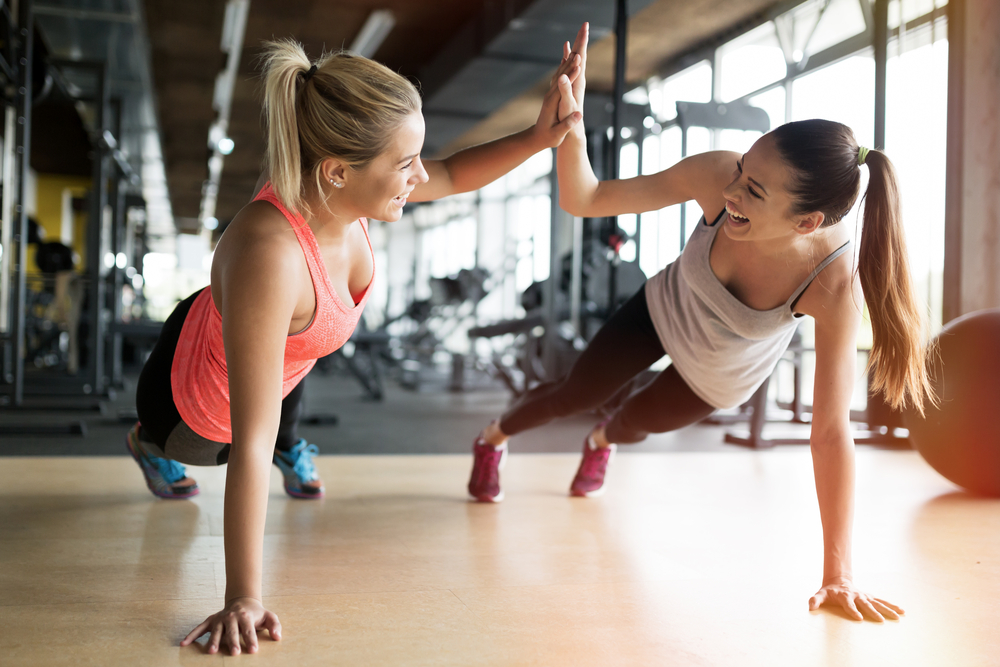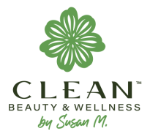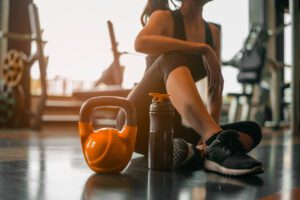Getting Enough Exercise? Big Physical and Mental Health Benefits
Here at Clean Beauty and Wellness, we’ve always been passionate about fitness and the benefits of physical activity. We’ve experienced the physical and mental health benefits of getting active—and it feels great!
But did you know, in 2016, less than 20 percent of American women were getting the recommended weekly amount of physical and muscle-strengthening activity. This is a challenge because physical activity is crucial for holistic health and wellness, especially as we get older.
So here are some of our favorite reasons to get active. We hope they inspire you to get moving and feel good!
It’s Confirmed: Your Health Depends on Physical Activity
While it may be tempting to look for quick fixes for our health, there’s nothing quite like physical activity for keeping us fit and healthy. The CDC publishes Physical Activity Guidelines for Americans based on decades of extensive scientific research.
In the guidelines, the Secretary of the US Department for Health explains,
“Regular physical activity is one of the most important things people can do to improve their health. Moving more and sitting less have tremendous benefits for everyone, regardless of age, sex, race, ethnicity, or current fitness level. …The scientific evidence continues to build—physical activity is linked with even more positive health outcomes than we previously thought.”
If you’re not currently participating in physical activity, don’t worry.
Even a small increase in your activity levels will reward you with immediate physical and mental health benefits. What’s more, they last over the long term.
Exercise for Physical Health
Exercise and physical activity are beneficial for pretty much everyone, including those with pre-existing health conditions and women who are pregnant. Physical activity helps to reduce the risk of:
- Early death
- Heart disease, heart attacks, and high blood pressure
- Type 2 diabetes
- Some cancers, including breast, bladder, stomach, and lung cancer
Exercise is also crucial for staying strong and preventing injuries as we age. Doing some strength and balance training as we get older is a great way to prevent life-changing injuries like a broken hip. It also helps ensure that poor mobility doesn’t get in the way of enjoying our daily lives.
Exercise for Mental health
Remember we said you could feel the benefits of exercise right away? Well, it’s true! The first benefits you’ll feel will be for your mental health. Even exercising just once can lower your blood pressure, reduce anxiety, and improve the quality of your sleep.
Over the long term, regular exercise can help reduce anxiety and depression. It also reduces the risk of developing dementia or Alzheimer’s disease. There’s even evidence that exercise helps us with executive functioning, making it easier to plan, organize, regulate our emotions, and make decisions.
Overall, adults who do regular physical activity report a higher quality of life. This is also true for people with chronic illnesses like arthritis, MS, and cancer survivors.
How Much Physical Activity Do We Actually Need?

The CDC recommends that adults do at least 150 minutes of moderate-intensity aerobic activity every week. That’s about 20 minutes a day.
That could mean walking the dog, cycling, gardening, swimming, or anything else that gets your heart rate going.
They also recommend that adults do activities that strengthen their muscles twice per week. This doesn’t necessarily mean lifting weights if that’s not your thing. Bodyweight exercises and using resistance bands are other great activities for muscle strengthening.
If you’re just getting started and 150 minutes seems unrealistic, start small and build up. And if you’re already active, there’s no harm in doing 300 minutes or more of physical activity every week, as long as you’re fueling and recovering correctly.
Post-Workout Recovery Plan
Speaking of which, if you’re increasing your levels of physical activity, chances are you’re going to feel a little sore afterwards.
Don’t let this put you off—it means it’s working. But there are things you can do to help your body recover and continue to get fitter and stronger.
Make sure to drink plenty of water and eat healthy food that’s rich in carbohydrates and protein after working out. This will replace the energy you’ve used up and ensure your body can build muscle.
CBD products can be a great addition to your post-workout recovery too. For example, our “On The Go” kit contains products that can help ease sore muscles post-workout and further reduce this additional stressor on the body. It’s good stress, but it’s extra stress nevertheless.
Use the Releaf Us CBD Help Relief Rub on tired muscles. Or, if you’ve really overdone it, our Roll With It roll-on gel contains CBD and lidocaine for enhanced pain relief. And a drop of our Full Spectrum CBD Oil can help ease any remaining anxiety that your workout hasn’t relieved.
Exercise and CBD: Vital Elements of Wellness
Our goal is to help you experience physical and mental health benefits throughout your life. Physical activity is a crucial part of your physical health, mental health, and overall quality of life.
Pairing moderate activity with a great post-exercise routine, like CBD Help Relief Rub or a Full Spectrum oil, is an excellent route to looking and feeling better than ever.


[…] learned quickly that wellness extends far beyond just exercising. We have to develop a strong sensibility about what we should be putting into our bodies, […]